Machine Learning in Psychiatry
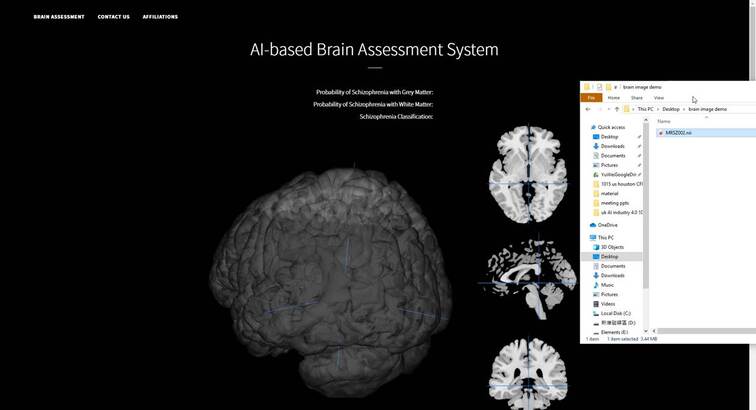
Using multiscale entropy (MSE) analysis, which enables capturing complex dynamics of time series, we characterized MSE patterns of blood-oxygen-level-dependent (BOLD) signal across different time scales and determined whether BOLD activity in patients with schizophrenia exhibits increased complexity (increased entropy in all time scales), decreased complexity toward regularity (decreased entropy in all time scales), or decreased complexity toward uncorrelated randomness (high entropy in short time scales followed by decayed entropy as the time scale increases). Results suggested that resting-state dynamics in schizophrenia exhibit two routes of pathologic change toward regular or random patterns, which contribute to the differences in syndrome domains of psychosis in patients with schizophrenia...(More)
Complexity Analysis of Brain Signal
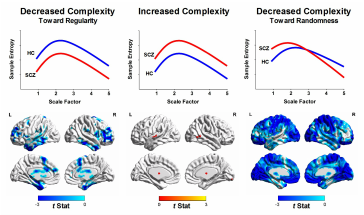
Using multiscale entropy (MSE) analysis, which enables capturing complex dynamics of time series, we characterized MSE patterns of blood-oxygen-level-dependent (BOLD) signal across different time scales and determined whether BOLD activity in patients with schizophrenia exhibits increased complexity (increased entropy in all time scales), decreased complexity toward regularity (decreased entropy in all time scales), or decreased complexity toward uncorrelated randomness (high entropy in short time scales followed by decayed entropy as the time scale increases). Results suggested that resting-state dynamics in schizophrenia exhibit two routes of pathologic change toward regular or random patterns, which contribute to the differences in syndrome domains of psychosis in patients with schizophrenia...(More)
Sleep
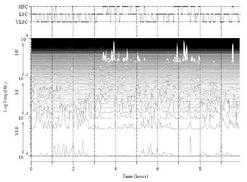
Sleep disturbances are common in both clinical inpatient and outpatient populations. The Margret & H. A. Rey Institute for Nonlinear Dynamics in Medicine (ReyLab) and Dr. Robert Thomas at Harvard University have devised a new analysis utilizing surface ECG signals for detecting alternating sleep-wake patterns in sleep disorders. The method is termed cardiopulmonary coupling analysis (CPC). We have applied this technique to assessing sleep quality in healthy subjects and patients with sleep disorders...(More)
Epidemiology Time Series Analysis
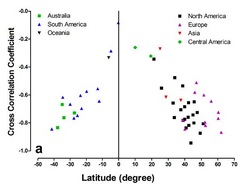
Fluctuation in epidemiological time series data usually consists of multiple periodic components which their cycles and trends need to be delineated and adjusted. However, conventional methods of time series decomposition require either predefined frequency of oscillations or the assumption of stationarity, which the later is often invalid in epidemiological time series. We therefore present an analytic modality combing an adaptive-based method of empirical mode decomposition and the multiple regression method...(More)
Heart Rate Variability
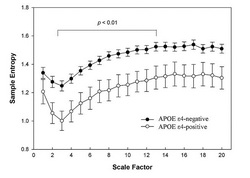
Instantaneous heart rate in response to physiological perturbations often exhibits remarkable oscillations at multiple time scales. These oscillations, known as heart rate variability (HRV), are mainly mediated by the autonomic nervous system via parasympathetic and sympathetic innervations. Analysis of HRV has been suggested to reveal subtle patterns of heart rate dynamics that are relevant to the underlying physiological state and autonomic nervous system function...(More)
Information Categorization Method

Everyday life is full of information, ranging from items in newspapers or televised reports, to highway signs, to works of music and literature. A common underlying feature of the many different types of information-carrying entities is that they can be coded and broadcast by a sequence of symbols. Some of these sequences are uniquely human creations, such as language, both spoken and written, and music. Other information sequences are generated by natural processes, such as genetic codes and the electrical transmission signals of our nervous systems. The central problem in the analysis of these complex sequences is how to effectively categorize their origins based on their information content...(More)
Your comments and suggestions are welcome.
Please send your comments by email to Dr. Albert C. Yang (Laboratory of Precision Psychiatry).
Location: No. 155, Section 2, Linong Street, Beitou District, Taipei, Taiwan
Please send your comments by email to Dr. Albert C. Yang (Laboratory of Precision Psychiatry).
Location: No. 155, Section 2, Linong Street, Beitou District, Taipei, Taiwan


